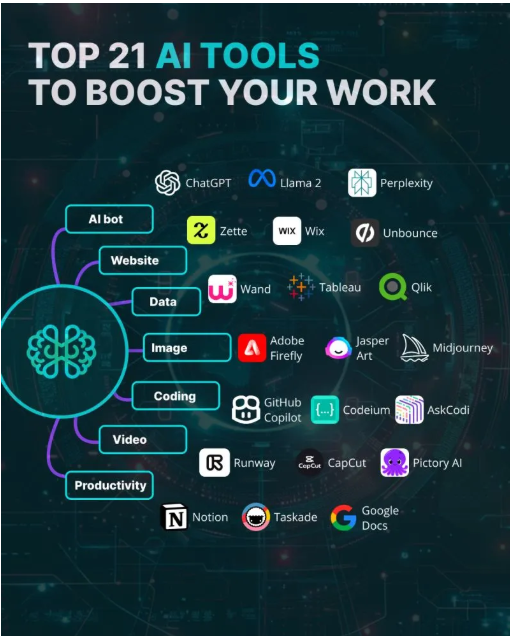
In today's fast-paced digital world, efficiency and innovation are more critical than ever. Artificial intelligence (AI) has emerged as a game-changer, helping individuals and businesses streamline tasks, enhance decision-making, and boost productivity. The market for AI solutions is growing rapidly, offering tools for various needs—from content creation to data analysis. If you want to stay ahead, knowing the best AI tools can make all the difference.
This article explores the top AI tools available today, their applications, and how they can revolutionize your personal and professional workflow.
Understanding the Power of AI Tools
Artificial intelligence is no longer confined to science fiction. Today, AI tools leverage machine learning, natural language processing, and data analysis to automate repetitive tasks, provide insights, and create content with unparalleled speed. The best AI tools combine usability, speed, and versatility, enabling even those without technical backgrounds to benefit from AI-driven solutions.
From automating routine processes to generating creative outputs, these tools save time and reduce errors, allowing professionals to focus on high-value work.
Key Categories of AI Tools
AI tools can be broadly categorized based on their function and purpose. Understanding these categories can help you select the right solution for your needs.
Creating content—articles, social media posts, videos, and graphics—can be time-consuming. AI tools for content creation help generate high-quality material quickly, ensuring consistency and engagement. These tools can:
By integrating AI content creation tools, businesses can maintain a steady flow of content without overloading their teams.
Data is a critical asset in decision-making. AI tools that analyze large datasets can uncover trends, forecast outcomes, and suggest actionable strategies. These tools can:
Organizations leveraging AI for data analysis gain a competitive edge by making faster, more informed decisions.
Repetitive tasks such as scheduling, reporting, and customer support can drain resources. AI-powered automation tools can handle these tasks efficiently, freeing up human resources for strategic initiatives. Common applications include:
Using automation tools ensures consistency and reduces the likelihood of human error.
Visual content is crucial in modern marketing. AI design tools help create graphics, videos, and layouts that are visually appealing and professional. These tools offer features such as:
Design teams can leverage these tools to accelerate production timelines without compromising quality.
AI is transforming teamwork by improving collaboration and project management. These tools assist in:
By implementing AI-powered collaboration tools, teams can work more effectively, even in remote or hybrid environments.
How to Choose the Best AI Tools
Selecting the best AI tools for your needs requires careful consideration. Here are some critical factors to evaluate:
An intuitive interface is essential, especially for users without technical expertise. Look for tools that require minimal setup and provide clear guidance.
Your AI tools should integrate smoothly with existing software like CRM systems, productivity apps, and cloud storage solutions.
AI tools that allow customization ensure you can tailor features to your specific requirements.
Handling sensitive data requires strict security standards. Always check whether the AI platform complies with privacy regulations.
While some AI tools can be expensive, the best AI tools offer scalable pricing that balances features and affordability.
Examples of Best AI Tools in Different Domains
Here’s a detailed look at some of the most effective AI tools across various domains.
AI writing tools can assist in drafting articles, reports, and marketing copy. They can optimize content for SEO, check grammar, and even generate ideas for new topics. These tools save time and maintain a high standard of writing quality.
In marketing, AI tools can personalize campaigns, predict customer needs, and analyze engagement. They can optimize ad targeting, automate email campaigns, and track ROI efficiently.
AI chatbots and virtual assistants can handle customer inquiries 24/7. They reduce wait times, improve satisfaction, and allow human agents to focus on complex queries.
AI-driven design tools help create eye-catching visuals for social media, presentations, and advertisements. They simplify tasks such as background removal, logo generation, and video enhancement.
From finance to healthcare, AI analytics platforms can detect patterns, forecast trends, and generate actionable insights. These tools empower decision-makers with accurate and timely information.
Benefits of Using AI Tools
Incorporating AI tools into your workflow offers numerous advantages:
By integrating the best AI tools into daily operations, organizations and individuals can achieve higher productivity and innovation.
Challenges to Consider
While AI offers many benefits, it’s essential to be aware of potential challenges:
Understanding these challenges ensures you can maximize the benefits of AI while minimizing risks.
Future of AI Tools
The future of AI tools is promising. Emerging trends indicate:
Adopting the best AI tools now positions businesses and professionals for long-term success.
How to Get Started
Getting started with AI doesn’t have to be complicated. Follow these steps:
A structured approach ensures you maximize the potential of AI without disruption.
Conclusion
The right AI tools can transform the way you work, enhancing productivity, creativity, and efficiency. From content creation and data analysis to marketing automation and design, AI is reshaping industries across the globe.
For professionals and organizations aiming to stay competitive, leveraging the best AI tools is no longer optional—it’s essential. By carefully selecting and implementing AI solutions, you can unlock new levels of performance and innovation in your daily operations.
AI is not just a technological trend—it’s a pathway to smarter, faster, and more effective work. Start exploring the possibilities today, and embrace the tools that will define the future of productivity.